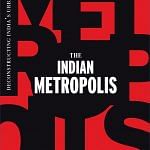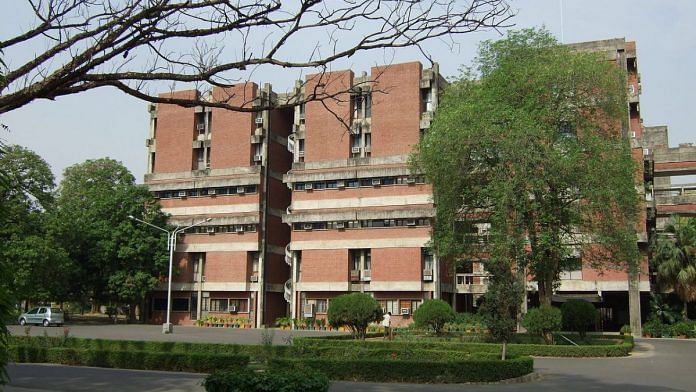Kanpur, with over three million people, ranks the highest in the list of Indian cities troubled by air pollution. The city’s air—reflecting inputs from coal burnt by industry, emissions from vehicles plying on unpaved roads, along with a proliferation of pollution from tanneries—has become a toxic cocktail of soot. This reflects in the city’s medical outlook, with the number of patients (sample from Kanpur’s Ganesh Shankar Vidyarthi Memorial Medical College) registering for respiratory illnesses tripling over the past five years, rising up to 600 per month (mostly a combination of the old and very young). Lung cancer patients are walking in on a weekly basis, compared to once in three months about five years back. Diseases like bronchial asthma, chronic pulmonary disease and pneumonia are becoming increasingly common. As of 2016, Uttar Pradesh was considered to have the second highest incidence of obstructive lung disease due to air pollution among all India states. In an ideal scenario, Kanpur’s local administration would be monitoring fine particulate matter (PM 2.5) levels daily across locations, with a focus on identifying causes and implementing mitigating options. However, as of late 2018, the city had just one PM 2.5 monitoring station. The urban administration seemed marked with apathy, with officials, working under parties of various political hues, outright denying the severity of the problem.
Also read: Meenakari—enamel art that travelled from 16th-century Persia to modern-day India
Ideally, Kanpur would be well-positioned to jump up the value curve in its industry specializations—it has over 50 institutes of higher education, including IIT Kanpur. Many such institutions also conduct research and training. There are three universities that offer a variety of courses in science, commerce and arts, with over 20 engineering colleges and medical institutes.
However, this entire educational infrastructure is simply not leveraged to improve the city’s lot. IIT Kanpur is a premier educational institution, but it is also a net exporter of talent, with students often taking up jobs outside the state or even the country. As a result, there are few, if any, workers available to take up roles within the city. There are also local industry-specific institutes in the city, with the Central Leather Research Institute (CLRI) being notable. However, their impact is limited, with CLRI’s local mandate usually restricted to conduct finite research tests. There is greater hope from the training centres being set up by the leather industry in Banthar, about 15 km away from Kanpur. Most main institutes in the city are oddly out of step with the city’s requirements—research is usually focussed on esoteric topics (e.g., developing nano-materials for sports clothing at IIT Kanpur), which would have limited application in the local industry in Kanpur, given the low-value nature of the skill set there. There is a similar disconnect in the curriculum offered at such institutes.
Industry focussed institutes offer more solace. The Lohia Group’s Technical Training and Research Centre, along with the JK Group’s Centre for Technical Training provide more employable students to the local industry in Kanpur. Such centres have helped provide specialized courses in areas relevant to the industry (e.g., plastic processing in the Lohia Group’s centre and mechanical fitting in the JK Group’s centre).
There have been some moves to resolve such issues. IIT Kanpur has sought to build close links with the industrial entrepreneurs, seeking to bring industry and academia together, biannually, while providing entrepreneurship training to students. Vocational training initiatives have helped provide sustained access to talent for large firms in the city, but such initiatives remain tied to specific companies. CLRI and IIT Kanpur have worked closely on evaluating and providing recommendations on Ganga’s pollution issue.
However, there are other issues in retaining students in Kanpur after graduation—salaries in the city are simply not commensurate with those available outside, in other metros. MSMEs’ focus on remaining low-cost while providing low-value goods has contributed to this problem with little, if any, investments in human capital and resources for workers. Loopholes in labour laws have been exploited to hire workers at non-contractual rates, with low wages and poor or irregular working conditions. Meanwhile, the liveability of the city continues to remain poor. This is vicious cycle with no end.
There are many reasons for why Kanpur failed—poor roads in the industrial areas combined with irregular power supply and industrial strife did the initial damage, along with lack of investments in developing a proficient workforce and sourcing cheap raw material. All that remains is hosiery and leather, with even Agra stealing a march in the latter. Meanwhile, the Leather Export Promotion Council has shifted to Chennai. Leather is increasingly isolated as an expensive material in the footwear segment, with consumers increasingly preferring cheaper footwear and purses that are made from polymers. Tougher environmental regulations have made this situation worse.
Also read: ‘One more fight, the last and the best’—How Bose planned great escape from British custody
Some hope remains—the city is still one of Uttar Pradesh’s top urban centres, with a range of shopping malls sprouting up and luxury homes being built. Kanpur should, ideally, look to widen the membership of its industrial associations, along with facilitating cross-association memberships, which can help consolidate its fragmented private sector. It should seek to build and broaden coalitions and strategic alliances with the state to gain benefits in an institutionalized manner. Relevant local academic and training institutions need to be established. Meanwhile, the state should, ideally, increase the fiscal transfer to Kanpur, allowing it to cover the maintenance costs allocated to it and enabling it to build institutional capacity to become a viable tax centre. The quality of life of the city needs to improve dramatically to turn this vicious cycle around.
Kanpur could have been a successful city. Its public administration could have focussed on building a growth coalition, developing linkages between industry and academics while leveraging state-based resources. Private firms along with business associations and other stakeholders in the civic space could have been persuaded to work together in implementing city development strategies and interventions. Such firms should have been asked to look beyond their existing sociopolitical context and assist the city in mitigating challenges that impeded its economic development. Instead, the city is making do with some investments in a new airport, a metro line and few electric buses.
 This excerpt from ‘The Indian Metropolis’ by Feroze Varun Gandhi has been published with permission from Rupa Publications.
This excerpt from ‘The Indian Metropolis’ by Feroze Varun Gandhi has been published with permission from Rupa Publications.



